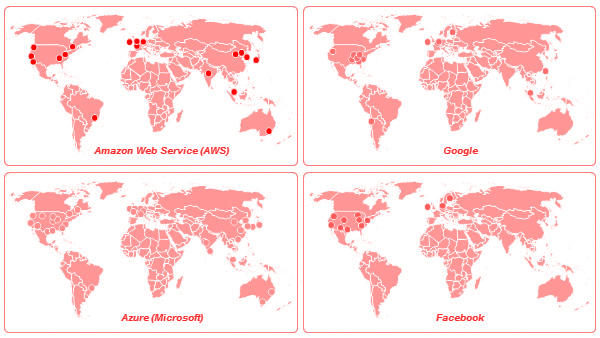BRIDGING/TO ESTABLISH
I. No cloud without a net.
1. Telecommunication.
Telecommunication represents an essential factor in our society. More than ever before,
we connect to people from around the world as if we were sharing the same room. New technologies and
especially
modern digital communication changed our notion of space, at least the way space affect time and
distances.
Telecommunication show incredible capacity to organize, to meet and also to collect and administer. The
telegraph
was an important discovery in term of global governance deeply connected to final stages of colonisation.
It made
it possible to precept without being physically on the spot. For government and organizations, they
became
pivotal.
It was after sometimes that telecommunications became « public platform » .
"In the nineteenth century there were no televisions, airplanes, computers, or
spacecrafts; nor were
there
antibiotics, credit cards, microwave ovens, compact discs, or mobile phones. There was, however, an
Internet.
During Queen Victoria's reign, the British new communications technology developed that allowed people
to
communicate almost instantly across vast distances, in effect shrinking the world faster and further
than
ever
before. A worldwide communications network whose cables spanned continents and oceans, it
revolutionized
business
practice, gave rise to new forms of crime, and inundated its users with a deluge of information.
Romances
blossomed over the wires. Some users devised secret codes and cracked by others. Its advocates
relentlessly hyped
the benefits of the network and dismissed by the skeptics. Governments and regulators tried and failed
to
control
the new medium. Attitudes toward everything from news gathering to diplomacy had to be rethought
entirely.
Meanwhile,
out on the wires, a technological subculture with its customs and vocabulary was establishing itself.
Does all this sound familiar?" Tom Standage, The Victorian Internet.
Words from Tom Standage introducing its book the "The Victorian Internet” and the narrow relation
between the British telegraph empire and today internet.

2. Undersea network sovereignty
When the first cables jointed continents in the mid-nineteenth century, they carried telegraph signals, which were a form of digital information. When the telegraph was replaced by fiber cables, a more advanced technology based on micro glass fiber to transmit information, the routes once used by the old copper cables dictated by the British Empire communication system remained unchanged. The knowledge and capacity to lay the cables across the ocean floor were undeniably valuable, creating a significant "cable family" lead first by telecoms and governments who are most of the time linked by ownership or agreement.

It is the 31st October 1902 that was inaugurated the system telegraphic connecting the British Empire
called the "All Red Line » and remains an important historical point to the expansion of the internet
network as we use it today. This was undoubtedly a predecessor to the surveillance system lead by the
USA with the help of the UK, Canada, Australia, and New Zealand called the Five Eyes. At the time, the
attempt to create a reliable way for the motherland to communicate to its territories was vital. In
addition to its naval knowledge over the oceans, the British had a distinct advantage towards this
technology,
its monopoly of the gutta-percha insulation for underwater lines was one straightforward reason for this
domination. From then, the Anglosphere has maintained substantial control over long-distance
communication
technology.
In 1996, Neal Stephenson wrote:
"Today, another 120 years later, we take wires completely for granted. This is most unwise. People who
use the Internet (or for that matter, who make long-distance phone calls) but who don't know about
wires
are just like the millions of complacent motorists who pump gasoline into their cars without ever
considering
where it came from or how it found its way to the corner gas station. That works only until the
political
situation in the Middle East gets all screwed up, or an oil tanker runs aground on a wildlife refuge.
In
the
same way, it behooves wired people to know a few things about wires - how they work, where they lie,
who
owns them, and what sorts of business deals and political machinations bring them into being.»
Published
on Wired.com, “Mother Earth Mother Board”

3. Global village and connectivity
Internet is a global computer network providing a variety of information and communication facilities. The internet dates back to research commissioned by the federal government of the United States in the 1960s. The internet was, in fact, a military program aiming to a robust network to communicate useful pieces of information during the Cold war, initially called ARPANET, constituting interconnection of regional academic and military networks in the 1980s.

The determining aspect of this new technology is to cut messages in packages which leave in all the directions before recomposing on arrival. The aim for the Pentagon was in particular, to decentralise the network in nodes, avoiding a unique target for the Soviets in case of a nuclear attack. Through the years, various NATO members researchers join the network until that in 1983, Arpa, its military original owner, becomes detached from the Arpanet. This is the birth of the international Network. From then on, many private companies are investing and started to connect countries, initializing the commercialisation of the internet to a broader audience to become the omnipresent tool that we use on a daily basis in modern society. The modern internet is made of cables, cables which were used already from 1850 to connect for the first time France and England through an undersea cable, allowing greetings between Queen Victoria and President Napoleon. Of course, the technology has evolved, the components and materials with it, but the idea to create a fast connection from A to B lay there but much of the activity is necessarily the same, and furthermore the routes were mostly unchanged. The routes dictated by the British Empire's communication needs still dictate the web of physical communications links under the seas.

It is in 1994 that internet takes a sensitive turn on its infrastructure. Clinton administration decided to privatized internet backbone, from then the govern-funded internet opened up to new actors. Four major private long distance network providers were UUNet, Sprint, Level 3 and AT&T who evolved later on in different companies. From then, telecom has been accused many times to provide information and access to their infrastructure if not installed within their building. The internet is a machine, a system that needs to be built and maintained through a consensus. Communication tools are a potent means of control over lands and population, if not necessary. The Internet brings an impressive mesh of network uniting different systems together.
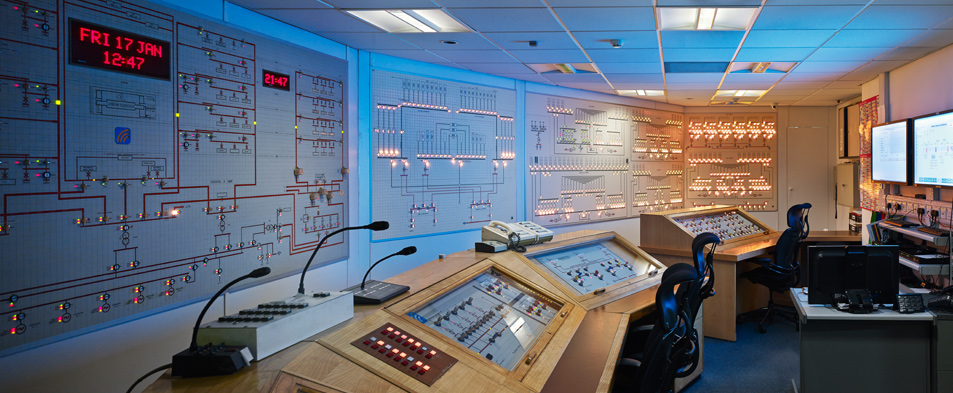
OWNERSHIP/TO CONTROL
II. The architecture of power.
1. Cables, intercontinental bridges
Unlike most of us would think, the internet is not in the air, the cloud is a voluntary « evasive » idea of what it is. A considerable part of what we call the cloud is in as a matter of fact tubes or cables, mainly made or rubber and fiberglass, a trivial idea considering the idea that those cables connect continental systems to create a network of networks called the internet. There are 223 international undersea cable systems ( 448 cables), and hardly any are backed up by satellite, only in remote locations or catastrophe area, for a simple reason, communications through able are much more efficient in term of velocity and stability. A tiny number of companies control the world's Internet traffic, and their knowledge of underwater topography and currents is crucial for knowing where not to lay a new cable, creating a consensus of state and private companies, like Seafarer, they create and modulate how the internet connection or not parts of the globe. "If the networks broke down, the Internet would be confined to the continents" as stated by Nicole Starosielskis in her book « The Undersea Network, unable to cross the oceans, we are in our societies, really dependant of the new speed of communication that we created. The global organization is governed through tubes. Considering that most Internet users rely on wifi, or wireless Internet, to transmit their messages, the fact that we cannot do without physical wires to transmit those bytes is downright paradoxical. Our seemingly wireless lives are predicated on a mess of tangled wires.
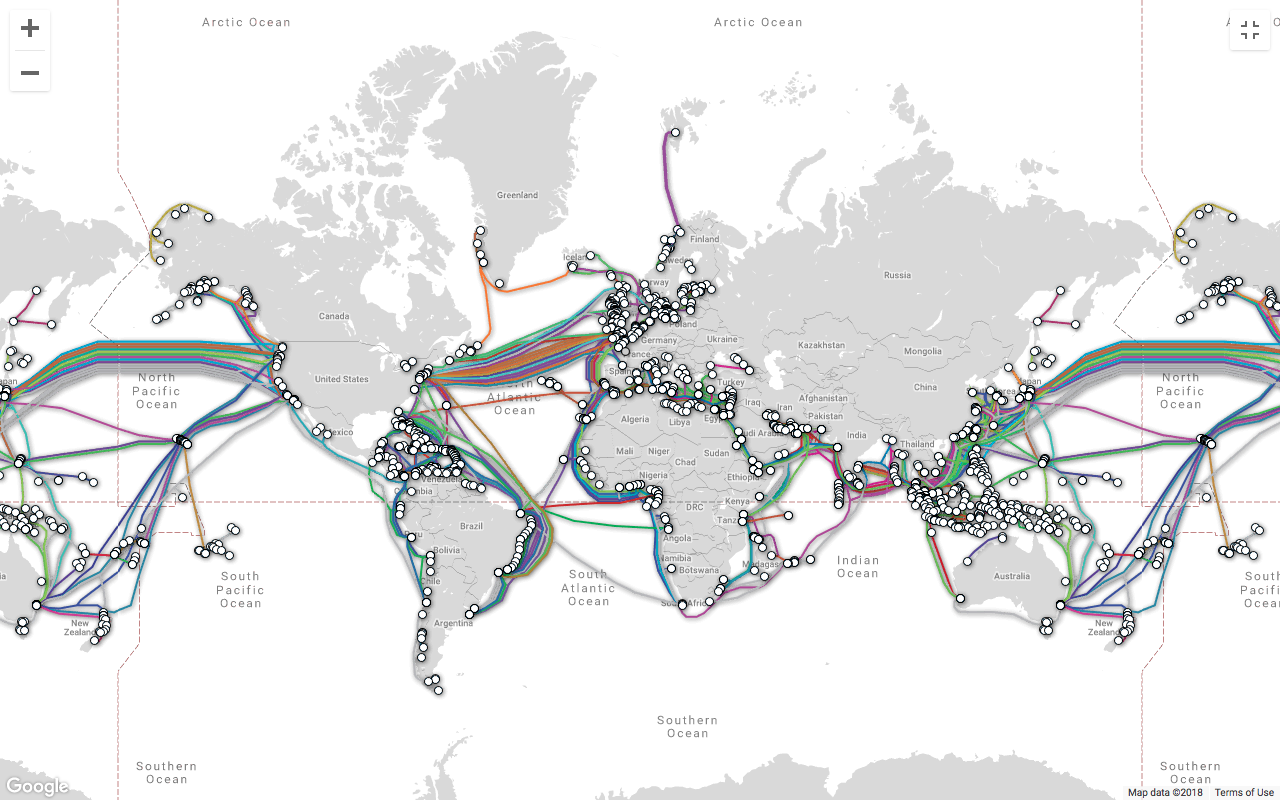
2.Datacenters, centralized storages
Data centers are critical locations in the reliability and existence of internet; they are archive and host for the cyberspace. Data centers offer centralised hardware for collecting, storing, processing, distributing or allowing access to a large amount of internet data. We connect them to communication networks so that people can access them, or the information on them, remotely. Large numbers of these clustered servers and related equipment can be housed in a room, an entire building or groups of buildings. Today's data center is likely to have thousands of very powerful and tiny servers running 24/7. Big centralized data centers are called server farms, and an overwhelming majority of those facilities -- 44 percent -- are in the US, China being a distant second, with 8 percent, followed by Japan, UK, and Germany. Meaning that half of all searches done on the internet have a chance to be located physically in the USA. One of the reason is that the cloud-based company who owns them are American companies. The cloud companies Amazon, Microsoft, Google and Amazon with at least 45 data centers location are spread around the globe, like outposts, per region (North America, Latin America, APAC, and EMEA). Physical locations of those Data centers are although a crucial aspect even if legislation applied to a Datacenter is made according to the country where it is located. They stretch jurisdictional boundaries to a critical perspective. In the US, Data centers are accessible to US law enforcement with or without a court order subpoena was issued. Architecture is physical, and it is grounded within a territory that we recognise and know, driven by law and policies. Regardless it’s increasing need of space, the physical locations are underrated by most users, maybe by lack of disinterest or made voluntary detached by those who build it, the reasons are manifold, by in this case, the lack of knowledge from the public is crucial. The Internet needs a floor, needs power, needs to cool down. The Internet isn’t autonomous neither unreachable.
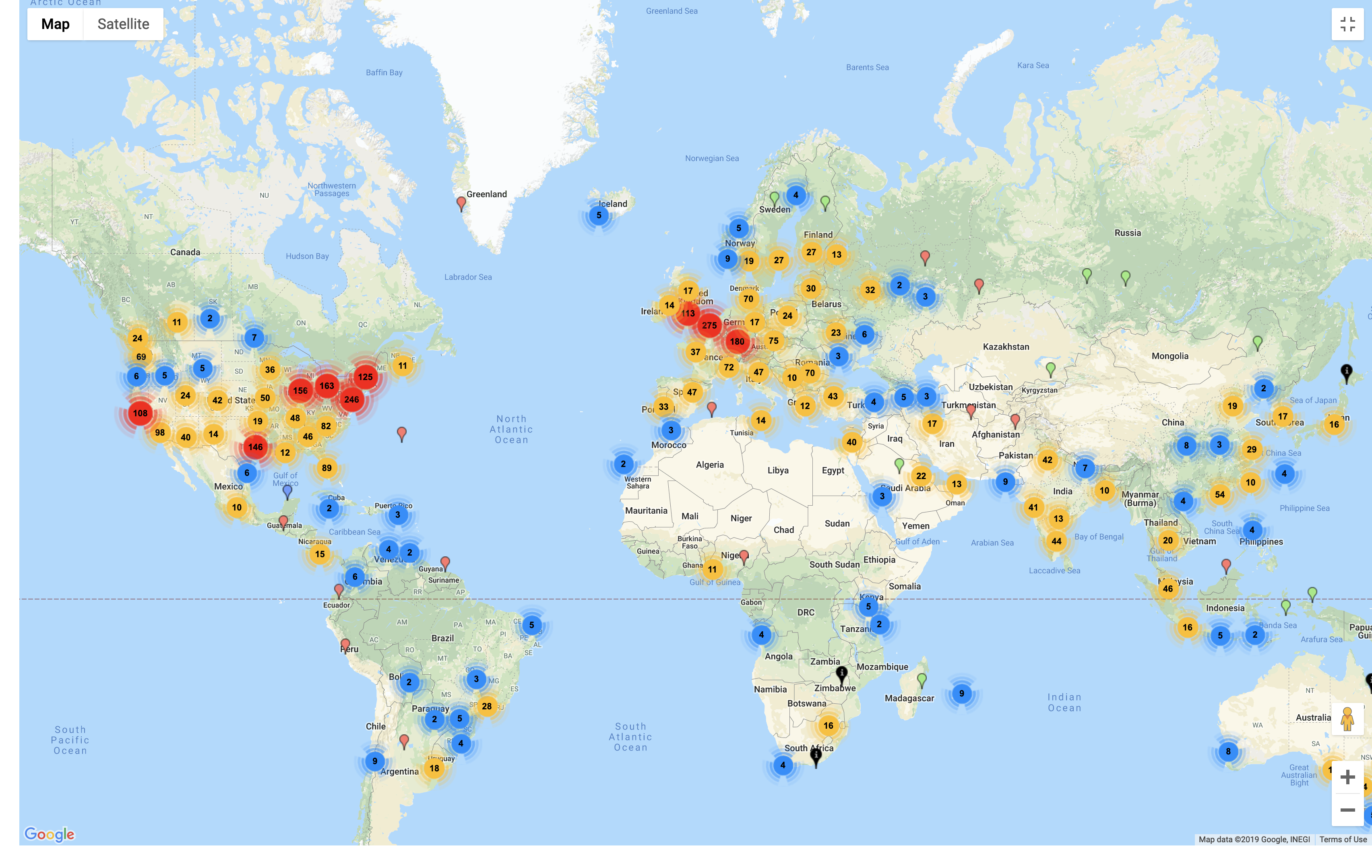
GRANT/ TO FARM TO MINE
III. Internet’s economic
1.Finance
The Internet has to be valuable, investment in its infrastructure represent a source of wealth in many ways. For financial centers, internet infrastructure represents a crux. For decades finances are no longer dealt with by stockbrokers, but instead by smart algorithms exchanging stock options at an incredibly fast pace where synchronisation is vital. The time delay is about everything, the quicker the algorithm can sell or buy options according to fluctuations, the better investment it can make. For that the network needs to be extremely resilient and stable, it needs high-speed connections, distances between those places have to be wired along the shortest route. The time reduction created by internet infrastructure is a pricey but lucrative characteristic that creates new bonds between those center like Tokyo and London or New York City and Tokyo. In both ways, east-west connections are improved and represent the most significant part of the network for financial purposes.
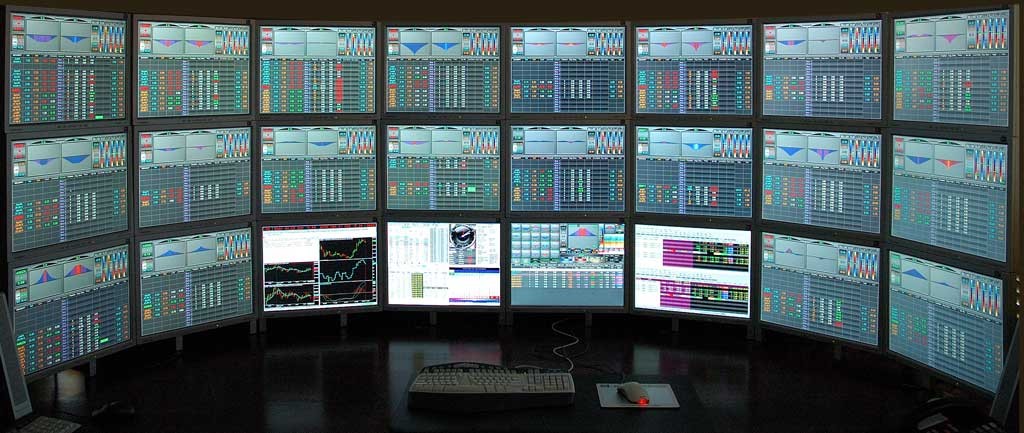
2.Surveillance and foreign conquest.
From a military point of view, the internet network represents an incredibly useful tool of surveillance, reaching new boundaries. With the End of Net neutrality and the Patriot Act internet became an official planetary surveillance system. As stated by Benjamin Bayart in 2009, internet was based on the idea that only the transmitter and receiver from a request would be able to get information. Net neutrality was, in fact, a legislation based on four essential principles: "Data transmission by operators without examining the content; Data transmission without taking into account the origin or destination of the data; Data transmission without prioritizing communication protocol; Data transmission without distorting content." The Federal Communications Commission repealed of net neutrality rules in June 2018. The end to end principle, created to avoid the actual situation has never been applied as described. In 2010s Microsoft and Google gave publicly access to its data stored outside the US following the Patriot Act treaty or "USA PATRIOT (Uniting and Strengthening America by Providing Appropriate Tools Required to Intercept and Obstruct Terrorism, USAPA)" signed on October 26, 2001.14 In August 2011, Google also confirmed that its data stored overseas is subject to “lawful access” by the US government. Before that, the Cable Act passed in 1984 set out rigid guidelines under which cable companies could refuse to disclose customer records to law enforcement. For example, under the Cable Act, a cable company did not have to respond to subpoenas or warrants for customer information. Instead, they only had to notify the customer of the request from law enforcement. The customer was then given a hearing at which the government was forced to justify the request for the records. A 2012 white paper by the law and privacy firm Hogan Lovells examined these findings, concluding that while the Patriot Act does give the US government access to the cloud, many other governments enjoy similar forms of access under their own laws and further, that using the location of a cloud server to determine legal protection was a mistaken idea altogether. The paper noted the widespread use of so-called Mutual Legal Assistance Treaties (MLATs), which streamline the exchange between countries of data needed for investigative purposes. The US, as a result of its unique position in managing the internet's core, also has jurisdiction over all so-called top-level domains, no matter where they are hosted and by whom. All top-level domain names (dot-com, dot-org, dot-net, etc.) must be registered through VeriSign, a Virginia-based company. The concept of network neutrality is more challenging to apply in the cloud since some of the nominal conditions to institute neutrality are absorbed by the cloud's combination of hosting and software services within a single black box. In the cloud, there is no more principled separation between the hosting of data, software, and client-side tools through which the data is handled and experienced. Indeed, the enormous success of the cloud is that it provides for all of these things at once. "Collectively, they [internet users] form what their inhabitants call the Net. It extends across that immense region of electron states, microwaves, magnetic fields, light pulses and thought which sci-fi writer William Gibson named Cyberspace." — John Perry Barlow, "Crime and Puzzlement" Cyberspace uses lands. Barlow uses in his book the word "inhabitants" of the internet, defining the user of the cyberspace like any other user of a territory. Cyberspace can be touched, and you agreed to be connected. The question about privacy and ownership of our data can be already questioned within the mesh of wires; countries have always differed regarding their policy and legislation on their land. If the internet isn’t a recognized entity, then we have to assume that every border crossed is defined by another system. The Internet isn’t relocated, it is rooted in the mud where the US has established new prosperity. The accessibility of information and communication with one resilient network provide a resource where the concept of mining makes sense. The new mineral is information, data is a resource.
BORDERS/TO MAINTAIN
IV. Invisible ecosystem.
Modern communication create a distortion in the feeling of spaces and territories, time is reduced to new extrema, milliseconds become an important measure, distances disappear. The loss of understanding distance and time is caused by telecommunication, but inevitable as it is its main purpose. Cables and data centers are modern outpost for digital dominion. For this purpose, the cables have to be hidden and protected in such a way that the flow isn’t disturbed. The seabed plays an important roles in it, it offers a way to hide the cables under the mud, sometimes not even hidden, but far enough removed from any human activity, where it lives undisturbed for an average of 25 years. They are at their worst exposure when approaching the landing points, seabed is disturbed by sea activities, and most of the time human activities. History has demonstrated the vulnerability of the digital infrastructure. In poorly connected parts of the world a simple cut cable can result in two countries not being able to exchange information. The resilience of internet is somewhat related to its owners, internet is made or wires and men carves the wires.
1.Natural constraints.
Data centers and fibre lines are generally designed to be invisible to the casual passerby, but follow a pattern of existent infrastructures such as highways to letdown the cables or around power stations for data centers. Their concentration can itself become a vulnerability to Internet resilience and is in fact opposite to the decentralised idea to internet. The American photographer Trevor Paglen did a meaningful effort to confront internet with its reality. In the project Deep Web Dive he trained himself and a team of journalists, writers, artists to scuba dive. The action might sounds silly but he brought this group of people one the track of one of the main undersea cables that connects Miami to Europe. The act of confronting a group of people to the reality of this cable came with a lot of discussion. This cables is used everyday, by millions of users, carrying information over thousands of kilometres. It has been laid down by a consensus of companies that is offering this infrastructure for our internet travels. The way those cables are placed is of course an information than can’t be shared out loud, to profite a certain level of security. By observing the submarine cable map, produced by the American company, Telegeography, we can easily observe that most of the cables are crossing from west to east, all around the globe. Antarctica remains the last continent disconnected from the internet undersea grid. It would be a real challenge, materials would have to withstand temperatures beyond -58 degrees, being able to contend ice shifting, to stretch as the ice moves and that does not freeze and snap the cable. The Antarctica is part of the 1% territory using satellites to transmit information, and thereís an even bigger limitation that comes with satellite internet. The South Pole is visible to the satellite for less than 12 hours per day, and that window shifts constantly. The installation of these cables involves very ordinary activities, like digging trenches, cutting and splitting the wires, laying cables from ships, and using local labor in port cities all over the world. The historical similarities to the installation of transatlantic telegraph and later telephone cables are quite vivid. The technology has advanced, but much of the activity is essentially identical. The visual artist Yvar Veermaë points in his project the way internet infrastructure tries to blend with the our physical environment. The project "Center of Doubt", presents pictures of different architecture and their development through the years, the security, the aspect and document the infrastructure that internet needs. The cables are really pricey assets, worth hundreds of millions to install and as much to maintain and investments in undersea cables are therefore really interested choices following commercial agreement between companies and countries. Such as in the past, the cables are railways, marine routes or highways to a new market, the communication of information in larger and faster quantities, which are the two critical characteristics of this infrastructure.
2. Territorial stress points
Nicole Starosielski's book, The Undersea Network highlight an hidden underwater conflict
happening constantly. It reveals an important distortion of time and space that wasn't possible before.
Creating a significant distance between the user of internet and its effect highlighting the question
around nation borders and responsibility? Could we imagine that internet has been pictured as a cloud
to minimize the political power of it?”
The internet bridges and connections between continents are certainly stress points of the
infrastructure.
The submerged and invisible part of the cables are both fragile and hard to oversee, creating a potential
critical zone in case of conflict. In war periods, submarines were used to cut certain cables, stopping
communication between key locations in case of sabotage.
In fact isolated countries are also vulnerable to accidents, in many cases sliced cables have interrupted
internet access in Vietnam or Georgia for exemple. A fisherman pulling over an undersea cable in fishing
line or a shovel carving up a cables by an innocent women in her garden, cases are numerous on how
internet surround us and can be altered.
"In 2014, the U.K.-based organization Reprieve filed a complaint with the British government against BT
for its role in facilitating drone strikes based on a submarine cable. In 2012, BT accepted a contract
from
the Defense Information Systems Agency (DISA) to connect a military base in the U.K. to a military base
in
Djibouti. The court threw out the complaint, ruling that Repreive presented insufficient evidence that
the
cable was explicitly used in drone strikes.
More recently, a Somali man brought a legal complaint to the German government over the role that the
Ramstein Air Force base played in a drone strike that killed his father. Ramstein isnít a landing point
for a submarine cable, but for a satellite uplink that connects directly to drones in Yemen, Somalia,
and elsewhere. A combination of submarine and terrestrial cables connects the uplink to Creech Air
Force
Base in Nevada. While the Ramstein complaint is more about the uplink than the fiber, it and the
Reprieve
complaint are reminders of the scale of military network infrastructure, and the significance of that
infrastructure in contemporary warfare." Nicole Starosielski, The Undersea Network.
Cables make it hard for legislation and legal representation, the tubes are invisible but also what goes
through it.
Nicole Starosielski highlight how extensive the effect of the internet infrastructure is. Orders are
given
in a country,
crossing borders without any requirement to have a direct effect on another country. The dematerialised
action goes so quickly
that the feeling of acting on somebody or somewhere cannot even be considered. The internet
infrastructure
space is used without
feeling of duty to another culture. In fact for a casual research, the impact might not be prompt, but it
shouldn’t be forgotten
that the internet is own, meaning that interest are leading the way a technology is used.
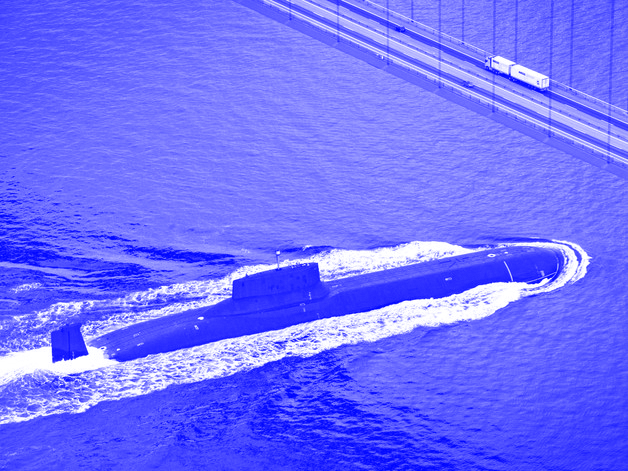
3.Cloud aspect
Although some companies continue to use the model of "security through obscurity",
others have begun to publicize cable infrastructure in order to appeal to potential customers.
The internet is promoted in such a way that users aren't disturbed by its fragile physicality, but also
to
protect it from any form of disturbance.
Telecoms and cables compagnies develop real campaign to gain trust toward the public. Maps about new
cables are numerous but they
only show where it starts and where it lands. The issue with that is that cables owners are influent and
can provide access to data that run through their infrastructure.
The cloud became the idea of a friendly ubiquious system, connecting systems together.
Although network advertising would have us believe that all of our data is hovering up in the air,
zigzagging between light and fluffy light cumulous clouds, in fact, most of it transits underground and
underwater.
"The intense investments in installations like the cable station set imprints for future
developments. Like a river sculpts out a path in a landscape, they make it much more likely
that subsequent flows will follow the same path. Fiber-optic Internet cables are routed through Cold
War-era installations and along colonial cable lines. Earlier regimes of security are latent in our
current networks, sometimes literally sitting beneath today's cable stations. At times this is good:
The "cable family » is still strong today, and despite downsizing, the closed nature of the industry
keeps sensitive information at bay. Yet other times, strategies of protection from a former era
endanger
future cables. For example, the choice to bury stations underground now makes some susceptible to a
rising ocean. The strategy of locating telegraph stations near cities in order to keep cablemen
connected
now makes these lines vulnerable to the anchors of ships and the shovels of local developers. No matter
which path we take, what secures the network today may compromise it in the future."
Nicole Starosielski, The Undersea Network.

CENTER OF GRAVITY/TO GROW
V. Extensive territory and Imperialism.
Internet is structured, but structured through a US perspective. They are in charge of who is represented on the internet."Electrical information devices for universal, tyrannical womb-to-tomb surveillance are causing a ery serious dilemma between our claim to privacy and the community's need to know." Marshall McLuhan, the medium is the massage.
1.Super-juridiction.
Submarine cables are built and owned by companies we often don’t know, obscuring access to information. For example, Vodafone built "Apollo" connecting the United Kingdom and the USA and Apollo South directly connects France and the USA, owned and operated by Apollo Submarine Cable System Limited, a Vodafone Group Limited Company. This cable is literally a physical bridge of transmission between Europe and North America, and also within Europe. 13 000Km of cables under British legislation? Is there any specific legislation about the data traveling through undersea cables? Metahaven published in 2012 Captives of the Cloud, in which they describe what the US governance over the internet represents for them a Super-jurisdiction means "that the law of one country can, through various forms of cooperation and association implied by server locations and network connections, be extended into and enacted in another." In fact, the US created a monopole around the internet. Data centers and cables are either connected or partly owned by the US. They created a centralized ecosystem applied to a worlwide network due to the infrastructure, the US are able to decide the flow of the internet.
2.Physical gateways and critical nodes
Undersea communication cables are durable and cost effective infrastructures supporting
the interconnection of America, Asia, and Australia. Most of the cables are routed through specific
routes, due to safer seabed topography or due to previous installations and agreements. Guam islands
and Hawai have been used as gates in the Pacific Ocean for both USA and Asia. They’ve been used
intensively during wars as surveillance stations and military operations and seem to be now still an
important location of the internet. The reason isn’t clear, but the information about the extra
concentration at those locations isn’t clear and informations diverge. Nevertheless they stand as
interesting
cases when it comes to cartographic representation and the misleading effect or this undersea
installation.
Many of thoses cables go through the island of Guam before it reachs Asia. Theses two islands
are territories of the United States of America. They are part of extensive terrotories, or gates playing
important role in the transmission of data between differents countries. Other islands are part of this
extension like Puerto Rico or Virgin Islands, they act as observatory for organistaions like NSA where,
under american juridiction, they can monitor sensitive informations.Cable stations are much more critical
that it seems,
Keawaula cable station supports more than 90 percent of transoceanic traffic, meaning that this one
station is literally an
observatory for most of daily connections, and internet consomption between US and Asia due to the fact
that most of data centres
are in the US, it remains a strategic location for internet regulation and measurement.
3.US control and digital existence, the para-administrative association of the US Trade Department.
The DNS (Domain Name Server) is the last part that we use to search information online, .com, .net, .org, are DNS given by the ICANN, an american association wich assign the digital representation to country or organisation.To perform its identifying function, a domain name needs to be unique. Thus, all root zone files must contain identical data. As a past legacy, the database in the A Root Server, which the Internet Corporation for Assigned Names and Numbers (ICANN) currently controls by virtue of its contract with the U.S. Department of Commerce (DoC), is considered authoritative. In his book "Ruling the Root Internet Governance and the Taming of Cyberspace" Milton L.Mueller explains how control of the root is being leveraged to control the Internet itself in such key areas as trademark and copyright protection, surveillance of users, content regulation, and regulation of the domain name supply industry. The root are the servers that contain the data related to every DNS, in other words the internet digital organisation. This explains why WikiLeak's vital infrastructure fell through, as key companies withdrew themselves from WikiLeaks without the check of a court. EveryDNS, a California-based domain name registry, stopped providing access to the wikileaks.org domain name server, so that the site would only be reachable if a user entered their IP address in the browser bar. MasterCard, PayPal, VISA, and Western Union ceased to process WikiLeaks donations. Apple removed a WikiLeaks iPhone app from its store, as was noted in Part I of this essay. These operations, together, amounted to an extra-legal embargo for which the organization was unprepared.
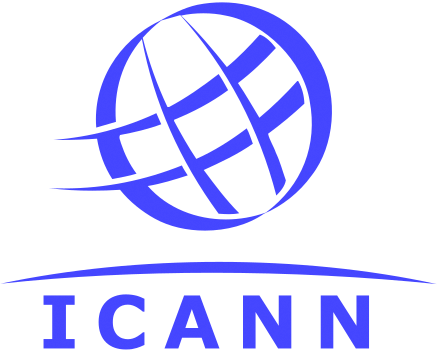
EXPANSION/TO SPREAD
VI. FUTURE TERRITORIES
So far, internet has been limited by its hardware. But technologies evolve, climate changes, and new grounds become accessible, new wealth can be reached.1.Antarctica
Improving Internet connectivity in remote areas will not only have a profound effect on the billions of people in low to middle income countries who are not currently ‘plugged in' – it will also assist the communication of pivotal research in remote locations such as the Antarctic, which currently struggles with intermittent connection. More than 4,000 scientists in the Antarctic are producing significantly more data than they can export using the existing communications infrastructure, which relies mostly on geostationary satellites. These satellites tend to only work for stations along the coast and typically with low data transfer rates and unreliable reception. With increasingly important data on climate change being bottlenecked at ground level, international governments, the world of academia and big businesses are working together to investigate and develop a number of possible solutions to solve the problem. These include connecting Antarctica to the Internet backbone's extensive network of submarine cables and using new and improved satellite technology specifically designed for the task of extracting research data from the region. Using cables to connect the icy continent to the global network is likely to be less expensive than using satellites, and the fibre optic cables are capable of transferring larger amounts of data. They would also provide access to stations away from the coastline. With only three months of the year yielding high enough temperatures to provide access to the cable network under the ice, and the challenges created by the movement of the ice shelf itself (around 10 metres of movement each year), cabling has not yet proven feasible and the antarctica remains a final frontier for the submarine cabling industry. Meanwhile, a programme supported by the Australian Space Research Programme (ASRP), Antarctic Broadband is using small-satellite technology customised to the needs of the users. Each will be placed into opposing highly elliptical orbits ensuring that the satellites will “dwell” over the South Pole for around 18 hours a day. With each satellite orbiting the Earth in opposing phases, the continent will receive continuous coverage. Using radio communication and highly directional transmitting and receiving antennas will allow for hugely increased data links. By observig the submarine cable map, produced by the American company, Telegeography, we can easily observe that most of the cables are crossing from west to east, all around the globe. Antartica remains the last continent disconnected from the internet undersea grid. It would be a real challenge, materials would have to withstand temperatures beyond -58 degrees, beeing able to contend ice shifting, to stretch as the ice moves and that does not freeze and snap the cable. The Antartica is part of the 1% territory using satelites to transmit information, and thereís an even bigger limitation that comes with satellite internet. The South Pole is visible to the satelite for less than 12 hours per day, and that window shifts constantly.
2.Troposphere
The pilot of Google's Project Loon, developed by Google's X Lab, was launched in June 2013, and comprises a fleet of solar-powered “smart” balloons floating in the stratosphere (approximately 20km above the Earth). The balloons connect to special antennae on the ground to deliver Internet connection to even the most remote location. The system calculates where each balloon is needed to get the optimal signal, and uses the layers of wind in the stratosphere to position each balloon to create a viable Internet network. A similar project is being developed by Facebook's Connectivity Lab. Both Google and Facebook recently acquired companies that make high-altitude drones with the intention of using the technology to bring the Internet to the remaining 5 billion people on earth, predominantly in low to middle income countries, who do not yet have access. Territories like Africa remains poorly connected due to a lack of previous installation, but the continent is growing, and ressources on a new territory are various. Internet need more “tourists” to benefits cloud-based companies such as google that benefit from users informations with project such as “internet.org” leads by facebook claiming to offer cheap internet for poor and disconnected countries. The idea there is closer to a colonisation and the use of ressources that a real offer, the internet.org platform is offering products labeled facebook and friends, the choice isn’t real, the internet freedom there can’t be real, the dependance on US infrastructure is oversized.

3.Exosphere
Bridging the global information divide created is the objective of a number of initiatives,
including Outernet and Oluvus, two start-ups working towards ubiquitous and democratic access to the
Internet.
Outernet hopes to enable the circumvention of Internet censorship and political control of the web by
developing free globally accessible Internet connectivity. The organisation is currently developing a
network of miniature satellites that will work in conjunction with existing geostationary satellites
already
in orbit. These will connect to the Internet through ground stations, up-linking data packets requested
by
a community as a whole. The packets will be broadcast in loops so that the data is continuously updated
even
if signal is poor.
More recently, the FCC agreed with the launch of a pair of experimental satellites on Sunday that are
designed to beam an ultrafast, lag-free Internet connection down to Earth, from the company SpaceX,
bringing
the debate of new territories even further.
Technology was restricting new forms of network but it appears that the improvements make new conquest
more
relevant in a time of intense connectivity
"Internet does not get rid of the traditional geographic boundaries, nor does it dissolves cultural
identity,
or smoothes out linguistic differences: it consecrates them."
Frédéric Martel, SMART: Enquête sur les internets.
In his comment, Frederic Martel emphasised the merging
of
Internet and its geography, that he calls cybergeography, rembering the strait link between digital
border and physical border.
They can't be taken appart, the digital space needs the physical infrastructure and the physical
teritory is organised through digital communication.
Both should be taken in account, the geolocation is more relevant than ever in a network where the body
isn't involved in the action, expect trhough digits and buttons.
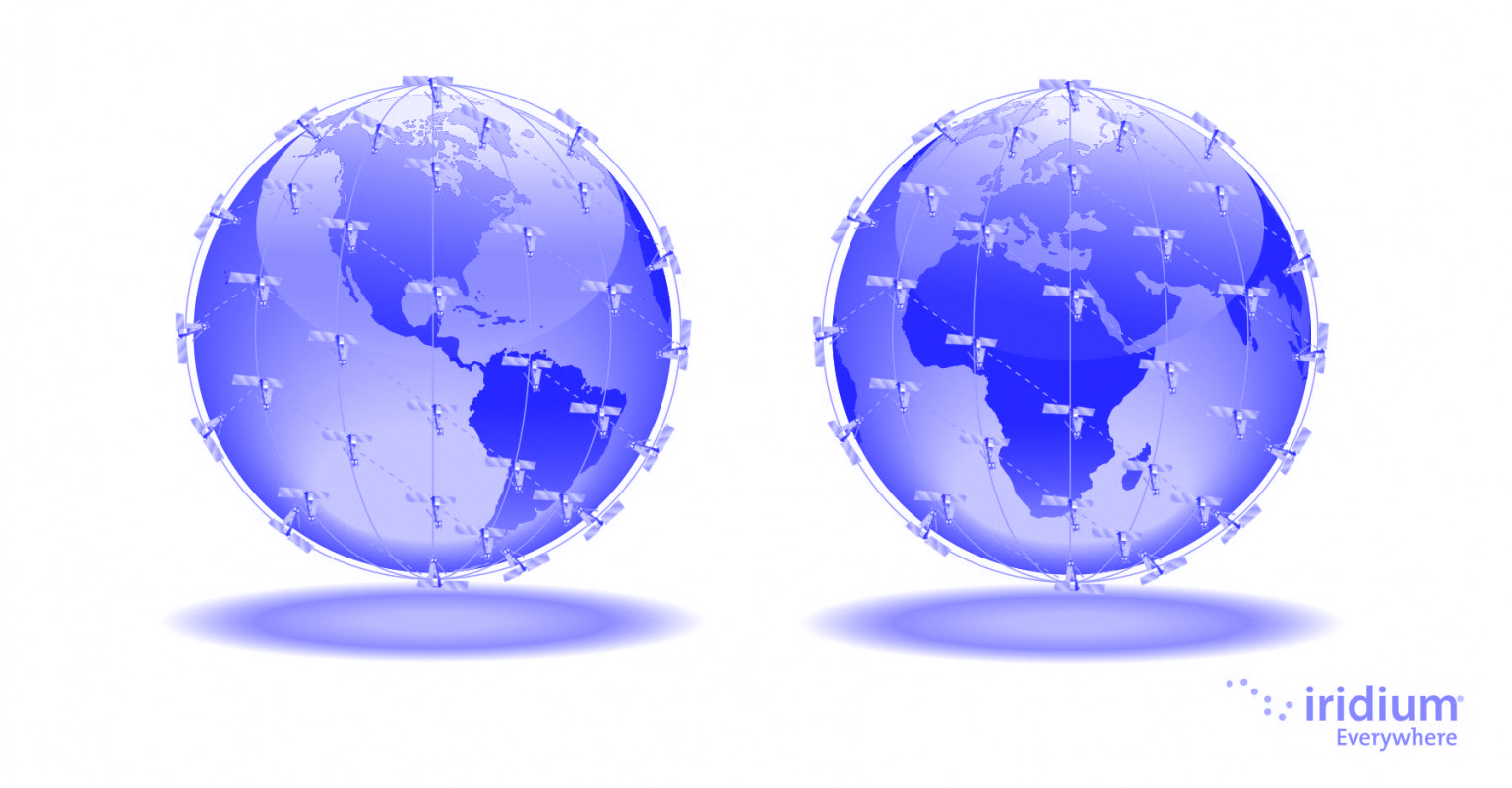
TERRITORIES/TO POLARIZE
VII. Cyberbalkanization and fragmentation for Reterritorialized internet
For various reasons, some countries decided to stay regulate their connection to the worldwide network. Russia only has four connection to the rest of the world, through Finland, Japan, Georgia, and Ukraine. Making the control of what goes in and out much more efficient.But more recently, Russia announced a significant idea considering the initial design of the internet, « The Kremlin has a bold plan to protect itself from possible external influence » Vladimir Putin announced the creation of an independent internet for the BRICS nations ( Brazil, Russia, India, China, South Africa). A phenomenon of Cyberbalkanization or splinternet follows this act; the fragmentation of the global internet into many smaller, nationally-administered internets aligned along geopolitical boundaries. Clyde Wayne Crews, a researcher at the Cato Institute, first used the term in 2001 to describe his concept of "parallel Internets that would be run as distinct, private, and autonomous universes. Today the internet is balkanizing into several distinct cyber-kingdoms lead by superpowers China, Russia, and Europe. This global trend reflects a scramble to defend informational sovereignty in an era of intrusive US internet surveillance and the rapidly emerging power of data.
1.B.R.I.C.S and the new continent.
The BRICS (Brazil, Russia, India, China, and South Africa) countries are going to set up
their
own system for Internet governance to bypass US control; they are creating an intranet.
The new system of Internet governance is a proposal from Russia’s National Security Council. We do not
know
how it will link up with the operation of alternative DNS (Domain Name System) which is already in
place
in China. If this new system catches on and expands, the United States will lose control over global
telecommunications. We will witness the Internet being split in two: websites being accessible to
everyone,
but only if you register with each of the two systems, regardless where you, the internet user is
based.
The last 14th November 2018, the United Nations met under the IGF (Internet Governance Forum) to
discuss
this fragmentation.
“A BRIC hit the web: Finding patterns in digital policymaking.
The BRIC countries are, by and large, nations whose populations are deeply interested in digital
technology,
which makes it relevant to understand just how that interest is being channeled. Data from Akamai
shows
that,
in order, China, Russia, Brazil, and India are all within the Top 10 list of countries from which
cyber-attacks
originate, a statistic that shows just how much talent there is in these countries for the
development
of digital
solutions, even though a significant parcel of that is manifested in the form of misconduct. We could
say that
“a BRIC hit the Web,” and for diverse reasons, part of the potential of these people are squandered
and
converted
into malicious actions, resulting in a net loss that troubles the global community.(…)All BRIC
nations
have put
forward strategies about their participation in the cyberspace, and a growing number of laws and
whitepapers
can be identified as relating to the global changes in the security paradigm as it relates both to
end
users
and the State itself. President Putin of Russia has more than once advanced the idea that developing
countries
should separate from the global DNS and pursue their solutions, China has also threatened to leave
the
DNS space
as it currently presented, Brazil has been very active since the beginnings of Internet Governance
and
has on
occasion expressed that its interests are at odds with some positions. India chooses to remain at the
borders
of the issue due to sovereignty concerns, only recently advancing more structured efforts within the
space.
What does this mean for the future of cooperation between these nations and its actors?"
The US global governance is threatened, and the discussions around the idea of a splinternet are
conceivable.
Meaning that the data from each part of the splinternet won’t be available to the other. You will have
to be
physically connected to the BRICS internet to visit a Chinese website for example. According to the
fact
that
many Chinese, Russian and Indian websites are part of the most visited websites in the world, the
restriction
would have a real impact on our use of the internet. US cloud-based content would become the western
reality
if the two blocks split. Fixing the internet even in the idea of internet governance instead of a new
internet
territory, free from old governmental powers.
2.Bringing back the European sovereignty
More and more countries could begin to create a separate domestic infrastructure
to shield their networks from foreign meddling.
More and more countries or organizations have already discussed the idea of taking back their
sovereignty over the internet. Germany proposed to shield local internet traffic from foreign
intelligence
services by creating its own internet; the Schengen organization proposed a digital Schengen plan to
protect it from any third party or spy, which means, a new physical infrastructure, a new organization.
Data centers are also intensively discussed now. They are the memory, the archive of the internet and 7
out of 11 of the biggest data centers are American, on American soil, that means a lot. Many European
countries are willing to take back their data on their territory.
"Even if we have access to content from around the world from our computers and smartphones, the
internet
is very local in its uses and adapts to the realities of each space. There are globalized platforms,
but little content. There is no "global internet" - and there will never be one. Far from globalism
without borders, the digital transition is not a homogenization. Cultural and linguistic
standardization
should not be feared. The digital revolution appears, on the contrary, as a territorialization and
fragmentation: the internet is a territory." Frédéric Martel, SMART: Enquête sur les internets.
3. Micronations and the future internet?
The principality of Sealand is a fascinating case of an attempt of a remote internet infrastructure. Sealand is an offshore platform in the North Sea approximately 12 kilometers (7.5 mi) off the coast of Suffolk. Originally called HM Fort Roughs, built as an anti-aircraft gun platform by the British during World War II and since 1967, the family and associate of Paddy Roy Bates claimed it as an independent sovereign state. Sealand states an excellent example on extensive internet legislation and US jurisdiction over its organization. In 2000s Sealand hosted the data haven called HavenCo, providing offshore data hosting, assuring protection against foreign jurisdictions. The new company promised customers "First World" infrastructure but with "Third World" regulations and taxes. Its slogan—"the free world just milliseconds away"—played up the cyberlibertarian idea that the Internet was about to make geography irrelevant.
.jpg)
HavenCo and Sealand have never been a success, the micro nations offered media scandals over the years
but for many reason couldn’t happen.
The servers that Sealand was offering were badly connected, unsecured, and hosting to unlegit users.
But
the idea of having an “haven” of the internet
was indeed really disturbing for other powers of the internet. Sealand represented the idea that a
physical territory could host a fault in the already
existing internet, in its legislation and technology. HavenCo was willing to offer a new system of
disconnected internet, without interaction
from existing powers, such as other digital spaces exist, like Tor, a physical ground was offered. Many
companies like Piratebay and Wikileaks
have tried to be involved in the creation of this new net, but the extensive effect that the US had on
them was too powerful by blocking online
payement through american companies for exemple, letting the company without resource.
"HavenCo thought it had found the perfect legal loophole: a country with the constitutional right to
ignore other countries' laws.
But this legal Gödel sentence didn't work because, in the real world, if a country's laws aren't
catching the people they're intended to catch, the country can change its laws."
James Grimmelmann, Death of a data haven: cypherpunks, WikiLeaks, and the world’s smallest nation.
Indeed Sealand is a way to show how much internet is stuck within the legacy of borders and older
sovereignty.
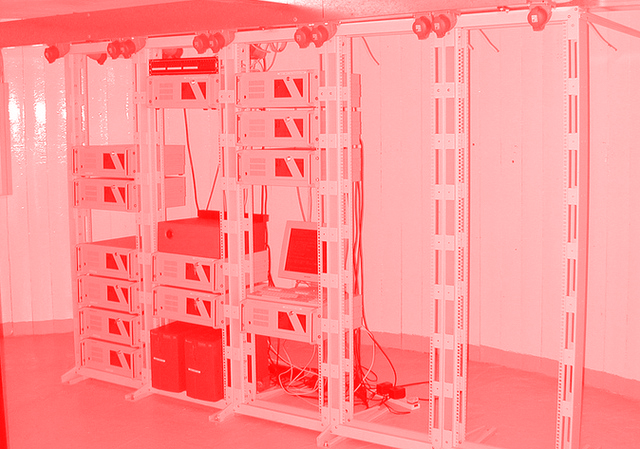
INTERNET DRIFT/ TO SHIFT
VIII. E-residency and the Estonian new digital nation
James Bridle with his project "Citizen-ex" carry a question about the internet and
citizenship.
The citizen of a country has the state of being a member of a particular country and having rights
because
of
it. A country has a ground, it does exist on a physical layer and is recognized by other countries to be
legit,
such as the internet. But Bridle comes with the idea of algorithmic citizenship following our digital
travels,
"Citizen Ex" calculates your Algorithmic Citizenship based on where you go online. Every site you visit
is
counted as evidence of your affiliation to a particular place and added to your constantly revised
Algorithmic
Citizenship. Because the internet is everywhere, you can go anywhere - but because the internet is real,
this
also has consequences.
Every traveler of the internet cross boundaries so quickly, in an appearance at least, that we might tend
to
forget that our rights change through the locations crossed within our search. Estonia brought the idea
of
internet resident. People of the internet need a safe area to stay, and Estonia made a proposition.
e-Estonia refers to a movement by the government of Estonia to facilitate citizen interactions with the
state through the use of electronic solutions. E-services created under this initiative include e-Voting,
e-Tax Board, e-Business, e-Banking, e-Ticket, e-School, University via the internet, the e-Governance
Academy,
as well as the release of several mobile applications
"What we aim to do is to create a global virtual business environment, where people from both the
developed
and developing countries can easily become entrepreneurs and start doing business anywhere in the
world.
Physical national borders and restrictions will no longer present an obstacle. You can start a
business,
open bank accounts, make transactions, sign contracts and even declare taxes, all on your computer,"
Kaspar Korjus, Estonian e-Residency Program Director.
Korjus said that registering an Estonian business was "useful for internet entrepreneurs in emerging
markets
who don’t have access to an online payment provider," and for startups from countries such as Ukraine or
Belarus
which suffer financial limitations from their governments.
But E-residency isn't related to citizenship and does not give the right to enter or reside in Estonia
physically. E-residency is limited so far countries offers digital residency, advantages, but can’t offer
citizenship to another territory. The consideration of having internet as a territorial entity isn’t
wrong;
new grounds are explored for an internet independent of the US imperialism and its will of control.
The cloud must become independent, and people will have to acknowledge what is the internet.
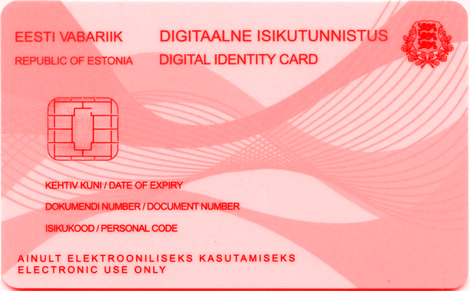
CLOUD-BASED AGENT/TO ORDER
IX.GAFA and the cloud-based sovereignty
By 2020, a dozen new submarine cables is planned to be in service, affording high-speed
bandwidth from Asia to US and US to Europe. Most of them are financed by US cloud-based company such as
Facebook and Amazon. The reason? The ability to connect both submarine network and their data center
is crucial. Limiting external intervention, GAFA is closing the gates to the internet infrastructure
around the world, cloud-based own now more than 2/3 of internet infrastructure, reinforcing american
internet imperialism. Google, Amazone, Facebook and Apple are those companies taking over the future
of the internet infrastructure.
When a new undersea communications cable becomes operational later this year, it will break the record
for a key metric: data rate times distance. In a single second, its six fiber-optic pairs, stretching
roughly 13,000 kilometers (8,000 miles) between Hong Kong and Los Angeles, will be able to send some
144 terabits in both directions. The cable’s primary purpose is to connect Facebook and Google data
centers in East Asia with those in the United States.
Google, Twitter, Facebook — are U.S. companies that other governments increasingly fear as political
agents. Chinese, Cuban, Iranian, and even Turkish politicians are already talking about "information
sovereignty" a euphemism for replacing services provided by Western Internet companies with their own
more limited but somewhat easier to control products, further splintering the World Wide Web into
numerous national Internets.
"Governments of the Industrial World, you weary giants of flesh and steel, I come
from Cyberspace, the new home of Mind. On behalf of the future, I ask you of the
past to leave us alone. You are not welcome among us. You have no sovereignty
where we gather. . . . I declare the global social space we are building to be naturally
independent of the tyrannies you seek to impose on us."
—John Perry Barlow, 1996
